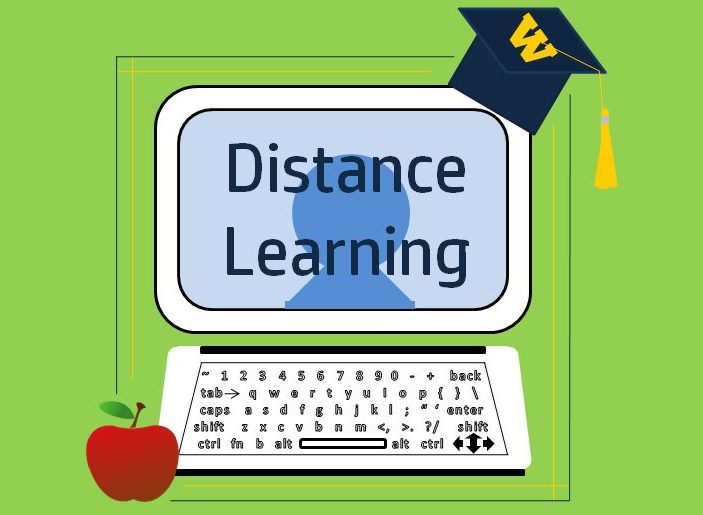Creating a New Norm for Students
Explaining Distance Learning
May 9, 2020
With the growing presence of COVID-19, education has transitioned to distance learning. The respect for teachers has increased tenfold as they efficiently created an online curriculum for all of their classes and found creative methods of communication. Although we’re now getting familiar with the process of working on and turning assignments in virtually or through packets, there are still a lot of questions about the impact of this new learning system.
The idea of distance learning is pretty straightforward; the West High website defines it as “instruction in which the student and instructor are in different locations.” The mechanics however are a whole other story. To finish the fourth quarter, work has been divided into five weeks. However, every teacher has their own system regarding methods for submitting all of it. Here’s where technology plays in: Microsoft Teams, Remind, Zoom meetings and Schoology have become some pretty popular ways of interacting with teachers. There are also paper packet options along with pick-up dates for students without access to personal devices.
There are several positive aspects to this new process. TUSD superintendent Dr. Brian Stephens says, “Pros to distance learning is that education can continue even though person-to-person interaction is not possible.” In addition, students have a chance to complete work with much less stress, try new hobbies and spend more time with their families during shelter-in-place. Career Center technician Mrs. Gayle Jackson adds, “The pros include the opportunity to be flexible with your schedule, work at your own pace with extended deadlines and not feel as rushed to complete assignments.”
Is distance learning the perfect substitute for classes though? Many have agreed that the cons outweigh the pros here. West High faculty member Mr. Tom Haim says, “Nothing can replace the face to face classroom experience and the way the traditional classroom builds learning connections, interaction and trust between students and teachers.” With technology or paper packets being the source of learning, there’s limited interaction between students and teachers, making communication difficult to maintain. Exploring deeper concepts is also a challenge as there is less collaboration and explanation. Additionally, every student now has a different learning environment. Although there is no way to guarantee the structure of a classroom, paper packets and an altered grading system help to maintain equity for all students.
Given the circumstances, students have also struggled to stay motivated. When the grade for this quarter cannot negatively impact you, what’s the harm in skipping some assignments? This isn’t the best idea. Distance learning provides learning and interaction opportunities remotely. This quarter serves as a review of important concepts taught throughout the year, which may be crucial for future courses or AP exams. There are also “social” repercussions. For example, a student looking for recommendation letters would want their teacher to see their hard work. Thus, skipping out on distance learning may not necessarily work out in your favor.
So let’s talk about how grades work. In short, your grade cannot go below what it was at the end of third quarter. It can stay the same or improve, depending on how responsible the student is. “For TUSD, our goal is to provide students the opportunity to continue to learn and be engaged in his or her education,” says Stephens. Although it isn’t the ideal way of ending the academic year, Haim says, “It provides a way to conclude our journey together and to support students in their transition to the next school year (or next step in their life journey for seniors).”
Knowing all this now, what should we do? Staying updated on the COVID-19 situation is a great place to start. Then, contact your teacher with any individual questions (they’re more than willing to help you out)! From there, think of the benefits of distance learning. Developing more proficiency with technology, keeping in contact with others and being able to motivate yourself are great skills for college and the workforce. Most of all, try for a positive outlook on the whole situation. Remember, your actions now are making history.

